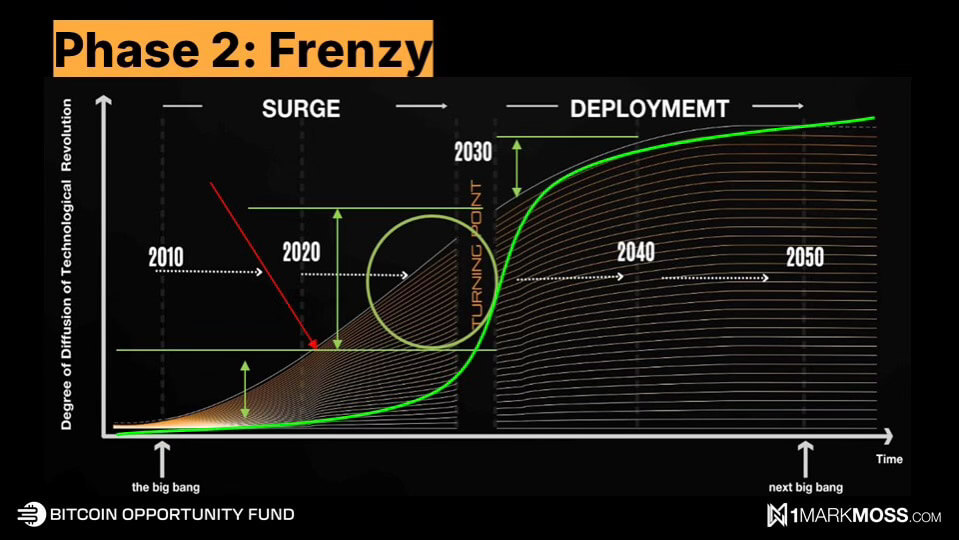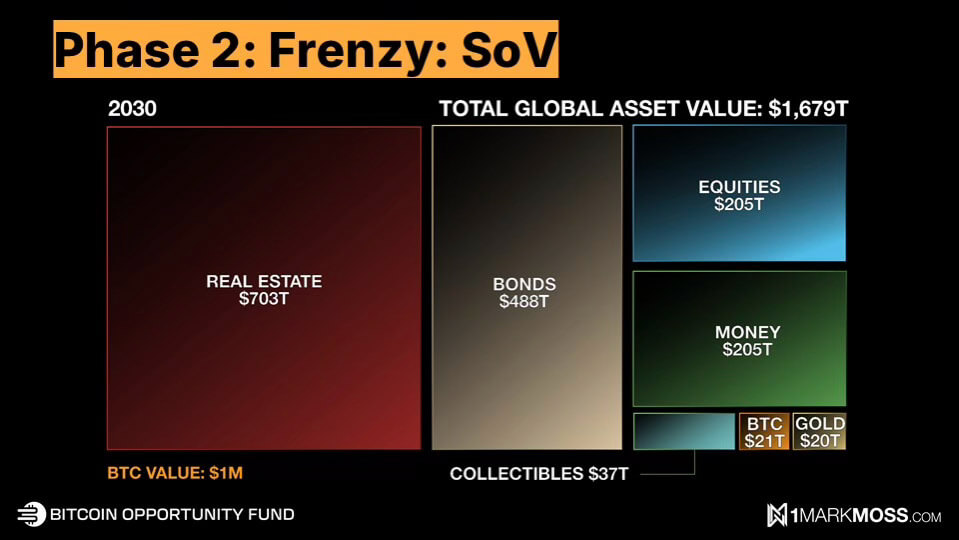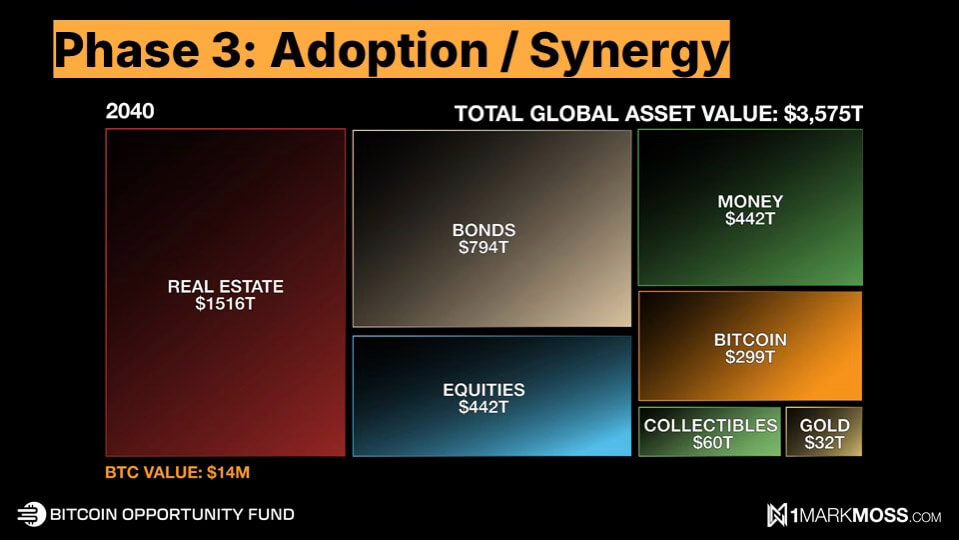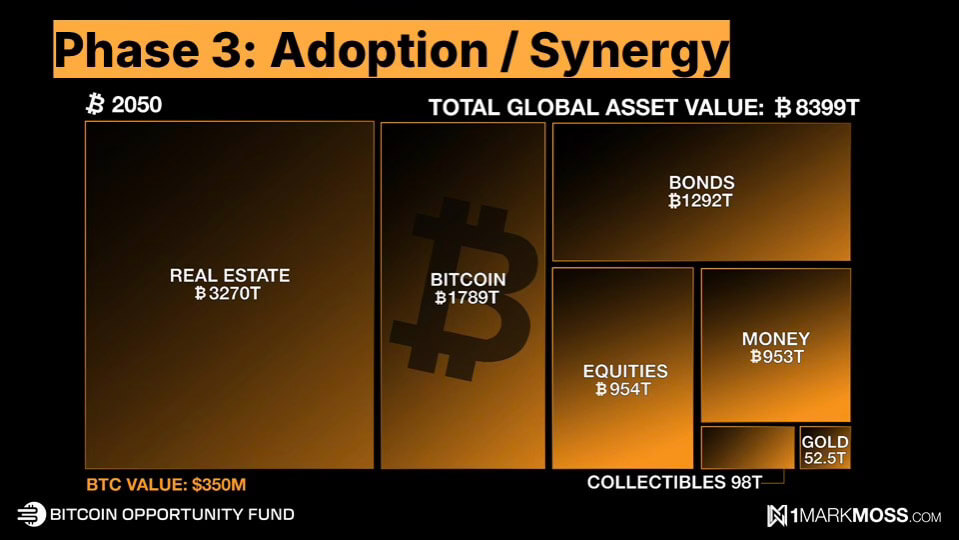
The following is a guest post by Christina Comben.
I first met Mark Moss at the entrance to the media center near the main stage Bitcoin MENA in Abu Dhabi, the first official Bitcoin conference in this part of the world. We haven’t met before, but because of his familiar drawl, infectious personality and his volumes of insightful content (including a YouTube channel and best-selling book The Uncommunist Manifesto), I feel like I already know him.
Mark has been championing the benefits of Bitcoin to anyone who will listen since 2016 and was a serial entrepreneur long before that.
“I started a company in 1999, at the height of the dot-com boom. That crashed. I started another company in 2001, an e-commerce company, which was not easy,” he laments. “It was terrible timing. Everyone laughed at me and said, no one would ever buy anything online. I built that up and had a great outcome with it.
From Orange County to Abu Dhabi
What brings him all the way from his home in Orange County to Bitcoin MENA in the opulent capital of the UAE?
“I am a teacher and content creator,” he says. “I am also a partner at a Bitcoin Venture Capital fundso we invest in the companies that build on and around the Bitcoin ecosystem. I also have a new company that just went public in Canada called Matador that is making a Microstrategy play with Bitcoin as a balance sheet asset and investing through the Bitcoin Layer 2 space. So I’m actively educating and investing in the space to try to build the world I want to see.
What kind of world is that? For Mark it is clearly Bitcoin, and not crypto. He’s been on the altcoin rollercoaster, but doesn’t see any other cryptocurrencies with long-term staying power. “I certainly made a lot of money,” he says, “a lot of money,” he repeats with extra emphasis. I’m waiting for him to tell the usual cautionary tale about keeping his stock at zero or getting rough at the sh**coin casino, but he says:
“In 2017 and 2018 we competed for Layer 1s. Ethereum, Cardano, Litecoin, NEO… well, Bitcoin won that one. So then the crypto story went to DeFi and that all fell apart, then crypto went to NFTs, and that all fell apart, and now it’s meme coins. No one is saying this is a world-changing technology.”
He admits that meme coins (and altcoins in general) may serve some purpose as a “gateway drug” to bring people to Bitcoin. “People come for the money and they stay for the freedom,” as they begin their Bitcoin journey and discover why they need permissionless, censorship-resistant money in the first place.
“I think that’s what stablecoins lead to as well,” he says, “eventually people get used to having a wallet and transferring digital assets, but then they wonder why their US dollar stablecoins offer them fewer goods and services buy, and why Bitcoin buys them more. , and I think it will all pass in the end.
The flawed Fiat system and the magical money printer
Mark says the biggest problem with fiat is that it has no capital costs.
“When you start to understand money, you understand that if printing money makes people rich, why don’t we just print a lot more? Money must have a real cost of capital. So for example, gold I have to buy land and equipment and spend energy and capital to get the gold. With Bitcoin, new coins are only released if you spend the money and do the work to get them. So the capital must have real costs. You can’t just print money out of thin air, otherwise we’d all be rich.”
He points to the S-curve model for measuring Bitcoin adoption.
“The way an S-curve works is that the time it takes to reach 10% adoption is the same as it takes to reach 80-90%. So you can see that in this second phase [between 2020 and 2030] is where we achieve the most growth. We had a retail adoption that delivered that [Bitcoin] to $1.2 trillion between 2010 and 2020, and then with institutional adoption the 90% will come.”

What does a world with 90% Bitcoin adoption look like? Is there an inevitable collapse of the fiat system and Armageddon on the streets? Mark pauses and shakes his head.
“I think a big misconception is that people think Bitcoin has to reach $1 million [something Mark envisions cerca 2030] or $10 million per coin, then that means fiat is worthless and now it is $1 million for a gallon of gasoline, but that is absolutely not true.”
A reallocation of valuable assets
Comparing Bitcoin adoption to market disruptors such as Uber and Airbnb, he says:
“Airbnb takes a little bit from the hotels. It doesn’t mean that hotels will disappear, just as Uber is getting more and more out of taxis. Bitcoin does not take anything away from the dollar. Bitcoin is moving away from other valuable assets, such as gold, stocks, bonds and real estate.”
He pulls out three charts comparing Bitcoin to stores of value as its price, size and market capitalization increase.
“Bitcoin could grow to $21 trillion by 2030, which means $1 million per Bitcoin, but that doesn’t mean all these other assets disappear. It is similar to gold. It takes a little bit of bonds, a little bit of money and a little bit of stocks.”


“Fast forward to 2050, Bitcoin will become the second largest asset class, but that doesn’t mean the other asset classes will disappear… By 2050, I believe all store-of-value assets will be priced in Bitcoin rather than US. dollars, and then one Bitcoin will be worth one Bitcoin, instead of $100,000 or $1 million.”

He brings up Gresham’s law in his plea for the dollar’s survival.
“Gresham’s Law states that bad money drives out good money. An example of this is that in the United States until 1965, quarters and dimes were made of pure silver. After ’65 they started making them out of junk metal. You can’t find a pre-65 quarter and dime in circulation anymore, and if you did, you wouldn’t spend it because it’s worth about $4. So you would make it. The bad money drove out the good money, pushing out the pre-65s. So I will always want to use fiat and store my Bitcoin.”
‘Good times’ ahead for Bitcoin
The incoming president’s son, Eric Trump, delivered a keynote at the event, stating:absolutely love Bitcoin”, in which he congratulated Bitcoiners for their vision, declaring that “America must lead a digital revolution”, and describing the moment he called his father at 6 a.m. on the day Bitcoin reached $100,000, which led to the now infamous “You’re welcome” post on Truth Social. So does Mark expect a golden age for Bitcoin in the United States? Will we see a resurgence in innovation and a return of the talent that bled out to other jurisdictions during previous administrations?
“The new government will certainly be optimistic about the sector,” he says. “It’s not really that Bitcoin that was on the ballot. What was really on the ballot was freedom. The freedom to choose how you want to store your money and how you want to handle your money.”
He sees Trump creating a “much friendlier” environment for businesses, but he does not foresee a massive return of the companies that left. “Once you’re gone, you’re kind of gone. Why would you come back?” he asks. “But maybe we’ll slow down the companies that leave and maybe even more will stay.”
What about a national strategic reserve in Bitcoin fueling the global Bitcoin game theory? He estimates the chance at 80%.
“I mean, RFK said he would do it and he’s now in the Trump administration. Trump said he would. We have a red Republican House, a Senate, and a Red Presidency, and we already have the bill introduced by Senator Lummis. It just needs to be approved. Maybe it will fail and they will resubmit it, but I would say that will happen in the next 24 months.”
Another prediction Mark has for the next 24 months is that US banking institutions will start escrowing Bitcoin, selling Bitcoin, and offering Bitcoin products.
“Last year, the banks tried to undo an SEC rule called SAV21, which prevents banks from taking Bitcoin into custody. It got to President Biden and he vetoed it. So we know that’s what they want. They already tried to overturn it and Biden vetoed it. I suspect that once Trump takes over, they will resubmit it and it will be approved… these are good times,” he says, beaming, “I am optimistic. I am very optimistic.”
To hear more about Mark’s views on Bitcoin and the stages of global adoption, follow him on Xcatch his main note from Bitcoin MENA, or watch his educational videos at his YouTube channel.


